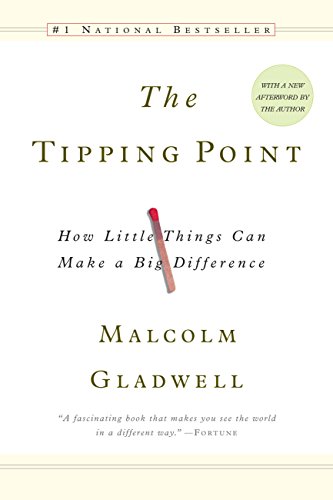

This article is an excerpt from the Shortform summary of "The Tipping Point" by Malcolm Gladwell. Shortform has the world's best summaries of books you should be reading.
Like this article? Sign up for a free trial here .
What does “diffusion” mean in sociology? What is the cultural diffusion meaning? What is a cultural diffusion example?
Cultural diffusion is a term in sociology for the way a contagious idea or product spreads among people who adopt it at different phases. It involves phases in which innovators, early adopters, the early majority, the late majority, and, finally, the laggards adopt an idea or product.
We’ll look at a cultural diffusion example to see how the idea of diffusion works in sociology and look at the factors that come into play at each stage of the diffusion model.
How Ideas Become Epidemics: The Cultural Diffusion Model
Cultural Diffusion Meaning: The cultural diffusion model in sociology explains the way a contagious idea or product spreads among people who adopt it at different phases.
- First, the Innovators take hold. Innovators are a fairly small group of more adventurous people or companies who are willing to take the risk and go out on a limb to try this idea.
- Then, the Early Adopters join in. They are also risk-takers, but slightly less so. Early Adopters are respected, thoughtful opinion leaders who observed the Innovators before taking the plunge themselves.
- After the Early Adopters, the masses jump on board in two waves: the Early Majority and the Late Majority. These majorities are more cautious and skeptical to try something new until the well-respected Early Adopters test it out.
- Finally, the Laggards join just as the swell of the epidemic falls off. Laggards are slow to adopt new innovations because they see no reason to change; why fix what’s not broken?
Cultural Diffusion Example: Iowa Farmers Try a New Corn Seed
The cultural diffusion model in sociology is well illustrated in a study of how Iowa farmers adopted a hybrid corn seed in the 1930s. Although this new seed was superior to what farmers were using, it took more than a decade after the seed was introduced before nearly all of the farmers had made the switch. This demonstrates the cultural diffusion meaning.
- In the first five years, only a handful of the 259 farmers studied had adopted the new seed. These were the Innovators.
- In the sixth year, 16 made the change, then 21 in the following year. These were the Early Adopters, who had seen the Innovators’ success and followed suit.
- In the following three years, 36, 61, 46 farmers jumped on board, respectively. These were the Early and Late Majority, who had waited for eight to 10 years after the seed’s introduction before trying it.
- In the following years, 36, 14, and finally 3 farmers adopted the new seed. These were the Laggards, who — despite seeing the new seed’s undeniable success in other farmers’ fields — were in no rush to change, even for the better.
If you graphed the number of farmers adopting the new seed each year, you would see a model epidemic curve that starts gradually, tips with the Early Adopters, climbs dramatically with the Early and Late Majority, and tapers off with the Laggards. This cultural diffusion example demonstrates how ideas and products spread in society.
Cultural Diffusion: How It Works
During cultural diffusion, different factors come into play each time an idea or product advances to the next group of adopters, because each group’s attitude and reasoning for adoption is different. Both Innovators and Early Adopters have a revolutionary mindset and are inherently open to innovations that will give them an edge, despite considerable risk.
- In a market setting, these are small companies who are willing to take big risks and try new ideas or products before they have been proven or before their prices have dropped.
However, before an idea or product moves from the Early Adopters to the Early Majority, a gap must be bridged; the fundamental difference in the visionary attitude of Early Adopters versus the caution of the Early Majority creates a chasm where would-be epidemics can fall off. This is where the Law of the Few becomes critical: Connectors, Mavens, and Salesmen can act as translators to make the seemingly revolutionary actions of the Innovators and Early Adopters attractive to the more mainstream and traditional majorities.
- In a market setting, the Early Majority would be the big companies that have a more complex and established workflow that needs to be adjusted to accommodate new innovations. These companies will take the extra time to build safety nets and manage risks if they decide to adopt a new technology.
The cultural diffusion meaning is sociology states that ideas and products go through various stages of adoption as they spread to the general public.
———End of Preview———

Like what you just read? Read the rest of the world's best summary of "The Tipping Point" at Shortform . Learn the book's critical concepts in 20 minutes or less .
Here's what you'll find in our full Tipping Point summary :
- What makes some movements tip into social epidemics
- The 3 key types of people you need on your side
- How to cause tipping points in business and life






